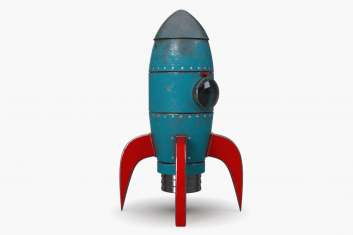Highlights
- Integrated experience across configuring and simulating workflows of a drilling process
- A component-agnostic architecture promoting ease of scalability
- An out-of-the-box mechanism to integrate with systems of choice
Technologies Used: Node.js, React, D3.js, Yarn, Lerna, Plotly.js, Material Design
Methodology: Agile
Customer
Based in Norway, the company is a software provider for oil and gas industry. The customer’s portfolio includes solutions for managing and simulating drilling processes, hydraulics modelling, configuring pressure control and drilling dynamics, etc.
Need
The customer had legacy software—built upon an outdated stack—for simulating different workflows of a drilling process. For instance, the system was responsible for complex mathematical calculations behind drilling-related activities. The solution comprised a number of components, each serving a particular workflow. However, those components were disparate and isolated from each other, so it was impossible to establish a unified workflow between the interrelated components.
Cooperating with HQSoftware, the customer wanted to deliver a solution that would allow for configuring a drilling process at each step across multiple workflows via an easy-to-use interface.
Challenges
Under the project, the team at HQSoftware had to resolve the following issues:
- All the components responsible for particular workflows of the drilling process needed to be independent to achieve ease of scalability (adding or deleting on demand). At the same time, it was important to ensure that any of the components can be integrated with each other, as well as serve as an out-of-the-box mechanism to integrate with other systems.
- Our developers had to deliver an optimized approach to storing massive arrays of mathematical calculations.
Solution
By elaborating a component-agnostic architecture, engineers of HQSoftware ensured that each of the system’s components is an independent one, yet could be easily integrated with any other module. The developed architectural approach also promoted ease of scalability, so components could be added or terminated on demand without the need to rewrite the whole solution.
Our team decomposed the system into panes: a simulation one and a configuration one. For each of the panels, experts of HQSoftware developed a set of configurators responsible for a particular workflow of a drilling process. For instance, it became possible to set a drilling trajectory using a predefined model. Then, the system would simulate the process with the set parameters and return the result. This way, users can compare different simulations against each other and make an informed decision.
To optimize storage of complex mathematical calculations, our developers delivered a script that would convert the stored data parameters from a metric system to the one convenient for a user (e.g., to a decimal system) on demand.
Outcome
Partnering with HQSoftware, the customer built a solution that allows for configuring and simulating each step of the drilling process either independently or as part of a complex, integrated workflow. Thanks to the designed component-agnostic architecture, the company achieved scalability in adding workflows on demand. Finally, the organization could use the elaborated mechanism to integrate the necessary workflows with any systems of the choice.
Read more about our Data analytics services.
Check Out Other Works
See How We Approach Business Objectives
We are open to seeing your business needs and determining the best solution. Complete this form, and receive a free personalized proposal from your dedicated manager.

Sergei Vardomatski
Founder



